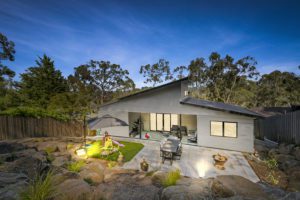It’s the question on everyone’s lips with the Melbourne market booming. So what should we be doing to find the pot of gold?
- Look for properties that have at least 700sqm in land size
As local councils have their individual guidelines on the minimum land size required to subdivide, make sure you check with them first. In general, properties larger than 700sqm are allowed. To check to see if your property fits these requirements you should head to http://services.land.vic.gov.au/maps/pmo.jsp type in the address and select ‘Get Report’ this will give you all the information you need. If in doubt give the local council a call.
- Check that the property allows ample room for a driveway
Councils generally insist that there should be enough space between the edge of the house and boundary line to build a driveway. Therefore, you’re not just looking for a block that is big enough, but one that has adequate space for a driveway. Depending on the local council, this can range from 2.5m to 3.5m including landscaping.
- Look at the level of the block
As a rule of thumb, flat land is easier and cheaper to subdivide than a sloping block. That’s because a steep sloping block can restrict what type of home you could build. This would also factor in with the council’s minimum size requirement. They may, for example want a minimum land area of 300sqm per dwelling on a level block and/or a minimum of 400sqm if it’s a sloping block, to ensure the property has enough usable land.
A sloping block also requires a larger cut and fill which could result in having to build retaining walls thus eating into your profit.
- Look for corner block properties
Corner blocks are good for subdivision and development as you could easily divide into two lots – each with its own street frontage and access. Bear in mind that if the block has kerb and guttering only on one side, the council can request you complete the kerb on both sides as a condition of the subdivision consent. With this councils will require additional permits to be taken out for your new crossover.
- Check out the structure of the existing property
If you’re planning to subdivide within an existing dwelling, make sure that it’s well-built and has solid bones to keep your construction costs down. The last thing you want is for you existing house to be crumbling away whilst the back construction is taking place.
- Understand the zoning rules
Check with the council that the property you’re about to buy complies with the zoning rules. If you’re planning to build medium density housing like a townhouse or duplex, ensure that the property is zoned for this structure. You can again check this by going to http://services.land.vic.gov.au/maps/pmo.jsp type in the address and select ‘Get Report’ this will give you all the information you need. If in doubt give the local council a call.
Subdiving can be a great way to maximise your income, always make sure to due your home work prior to purchasing.



